In photo editing, Lightroom Classic CC is a powerful tool that offers you numerous functions. However, sometimes the options that Lightroom provides are not sufficient, and you may want to further edit your images externally with specialized plugins. In this tutorial, I will show you how to effectively integrate external editing programs into your workflow to make the most out of your images.
Main Insights
- External editing allows the use of specialized plugins for advanced editing.
- The TIFF format is more suitable for editing than JPEG, especially for detailed adjustments.
- Correctly setting up presets in Lightroom is essential.
Step-by-Step Guide
Customize presets for external editing
Before using an external plugin, you should customize the presets in Lightroom. Go to the presets and select the section "External Editing." Here you will find various settings for file formats, color spaces, and bit depths.
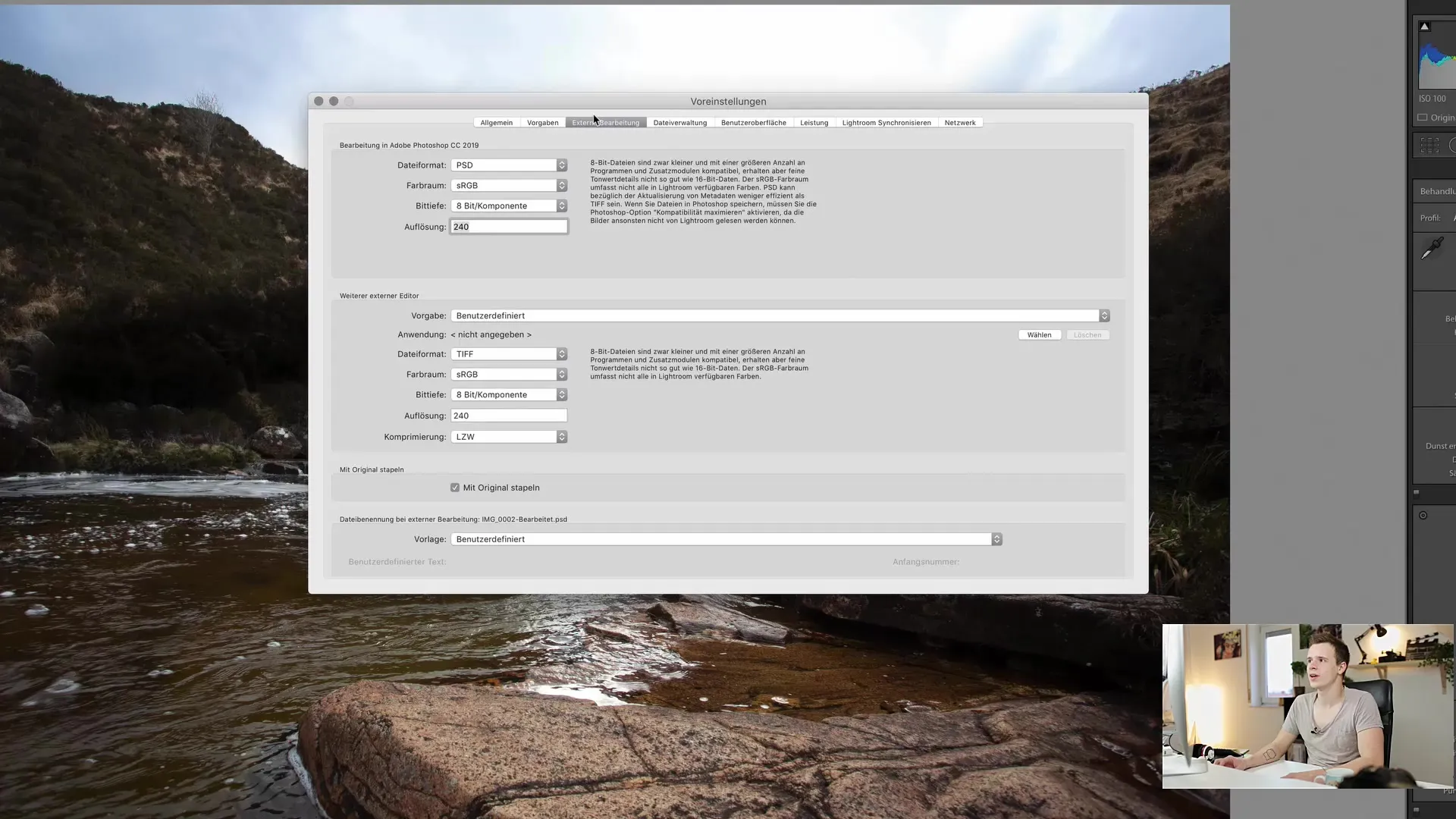
I recommend using the TIFF format, as long as the PSD format is not possible. TIFF is an uncompressed format that stores many details and is more suitable for post-processing. On the other hand, JPEGs are heavily compressed and less suitable for detailed edits and special effects.
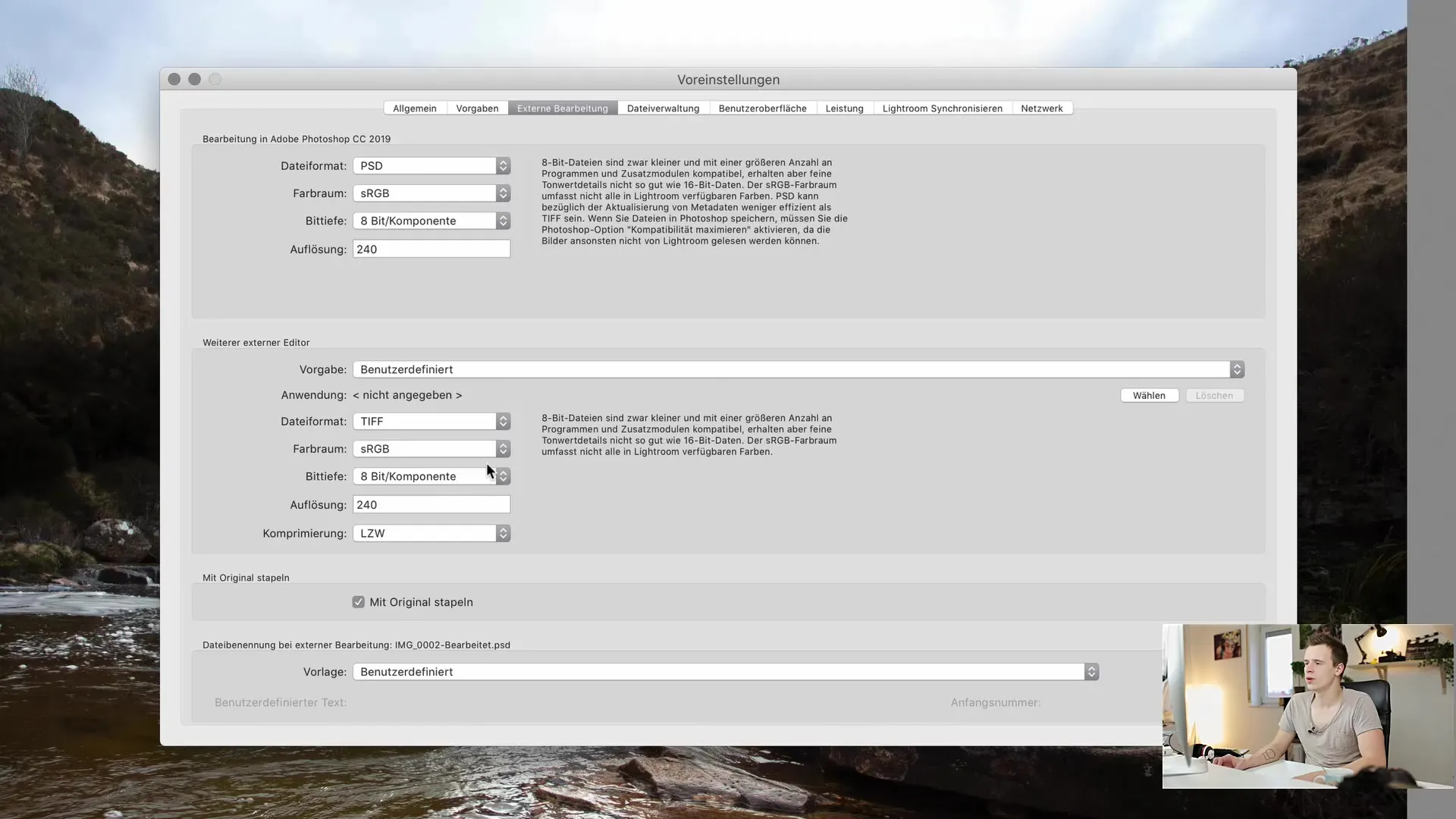
When selecting the bit depth, be aware that many programs have issues with 16-bit, which is why 8-bit is often the better choice. You can try it, but be aware of possible complications.
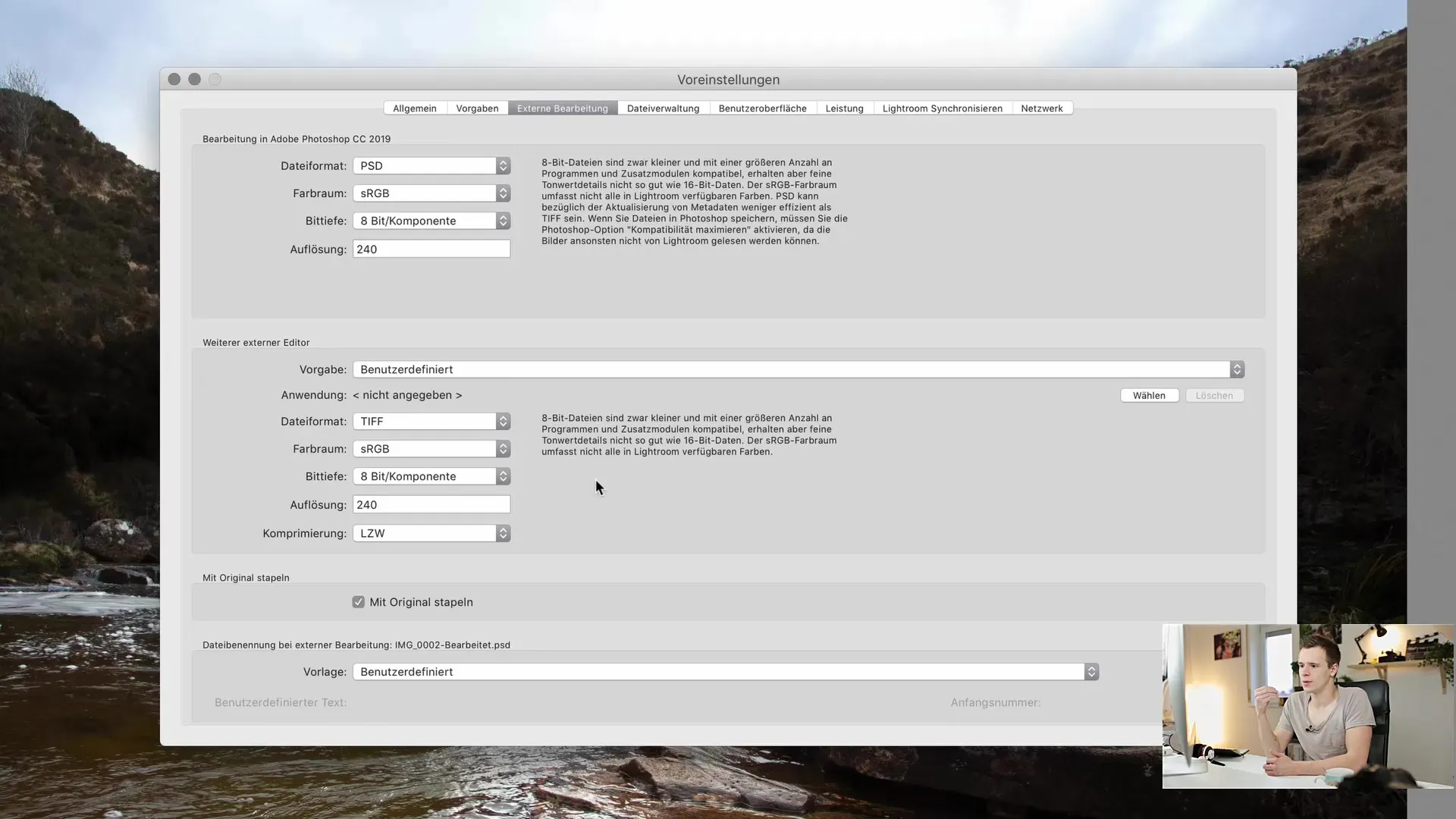
The foundation of photo development in Lightroom
Before activating an external plugin, make your basic adjustments in Lightroom. This includes RAW development and basic editing. Once you are satisfied with the initial steps, select the plugin for external editing.
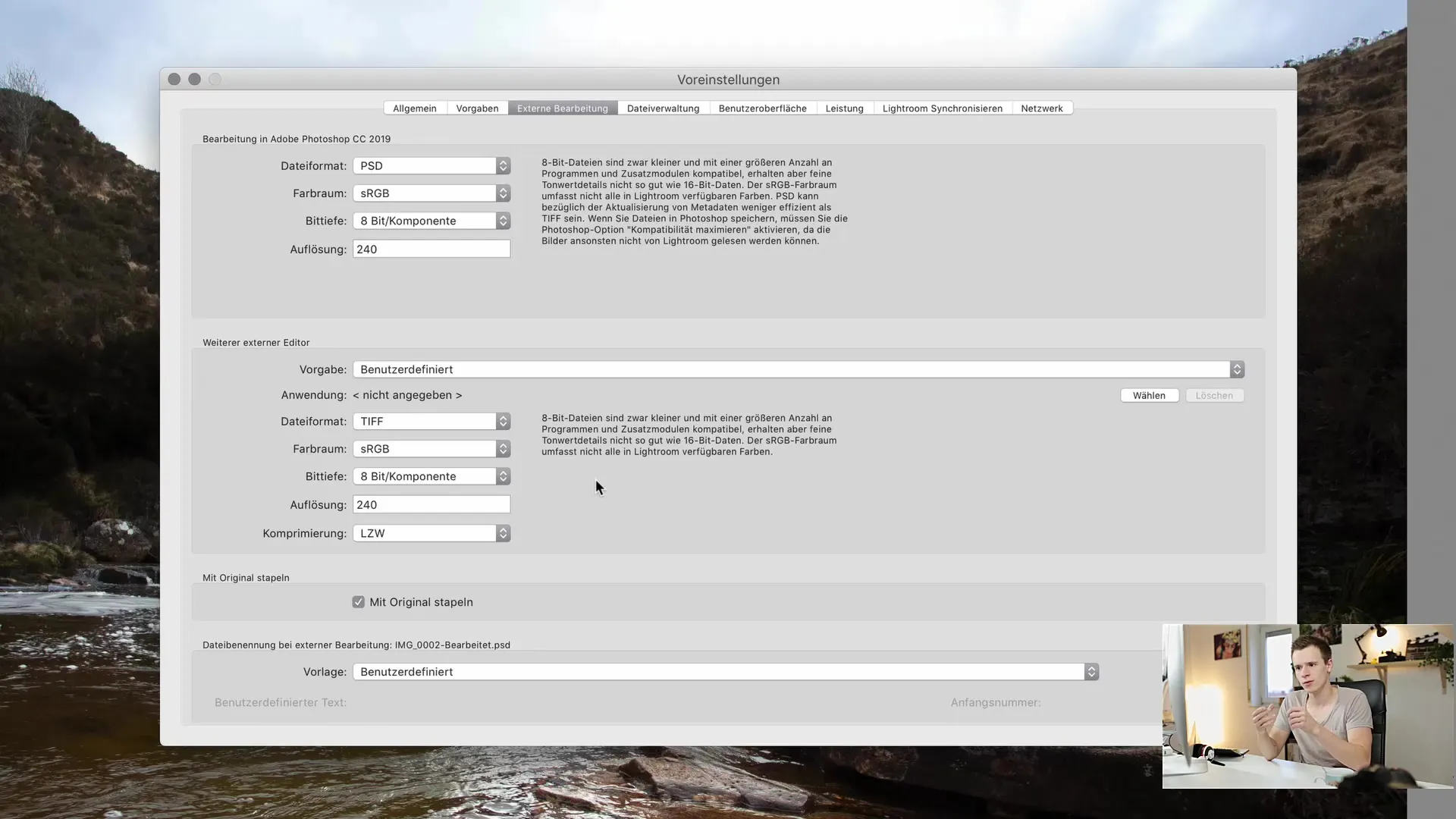
In Lightroom, you can access the desired external plugin via "Edit in." In this tutorial, we use "Color Effects Pro 4." Choose the application that is installed on your computer.
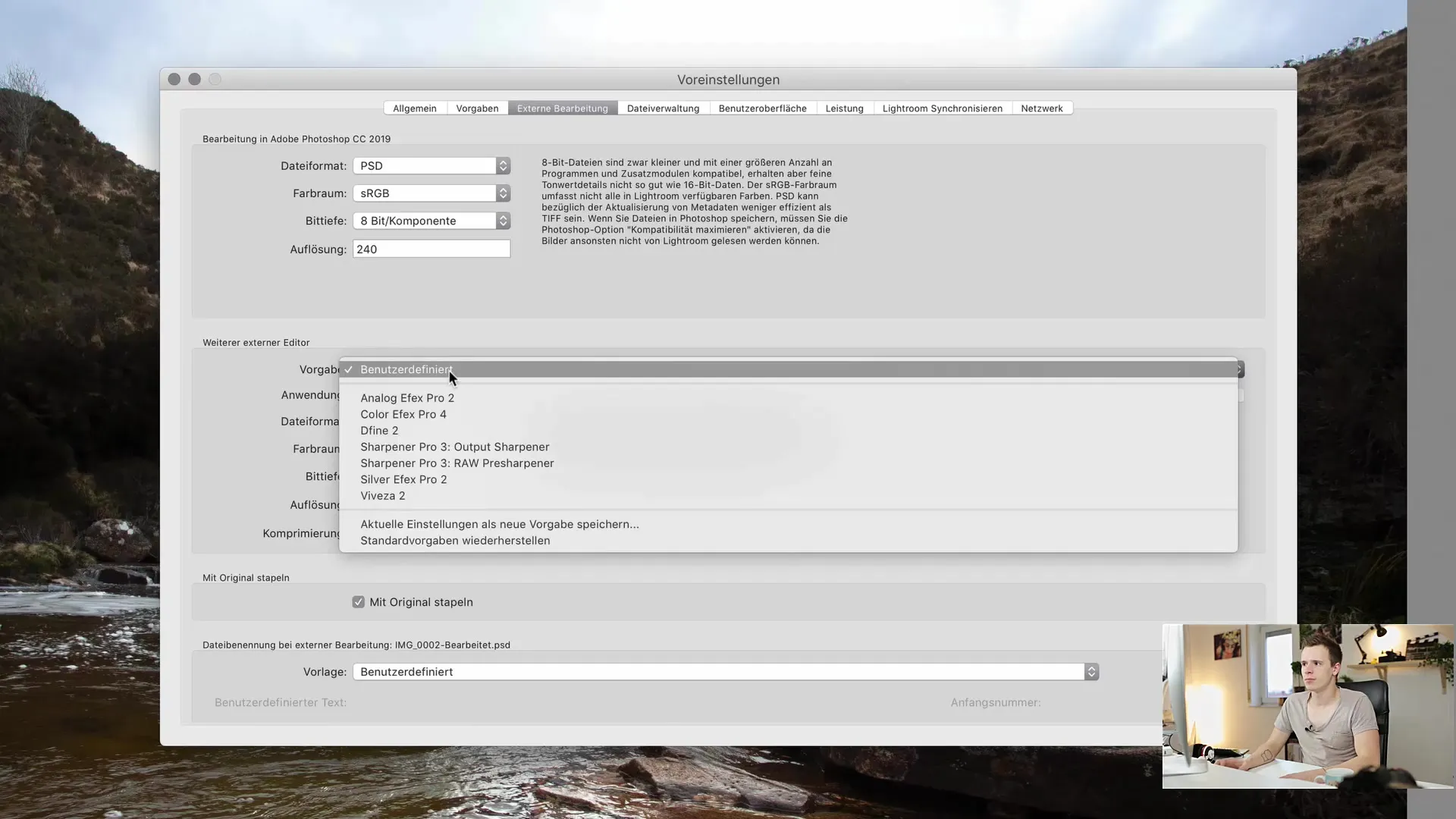
Perform external editing in the plugin
Now you are ready for external editing. Choose how you want to edit the image. You can edit a copy with the Lightroom adjustments, creating a new TIFF file that contains your previous settings.
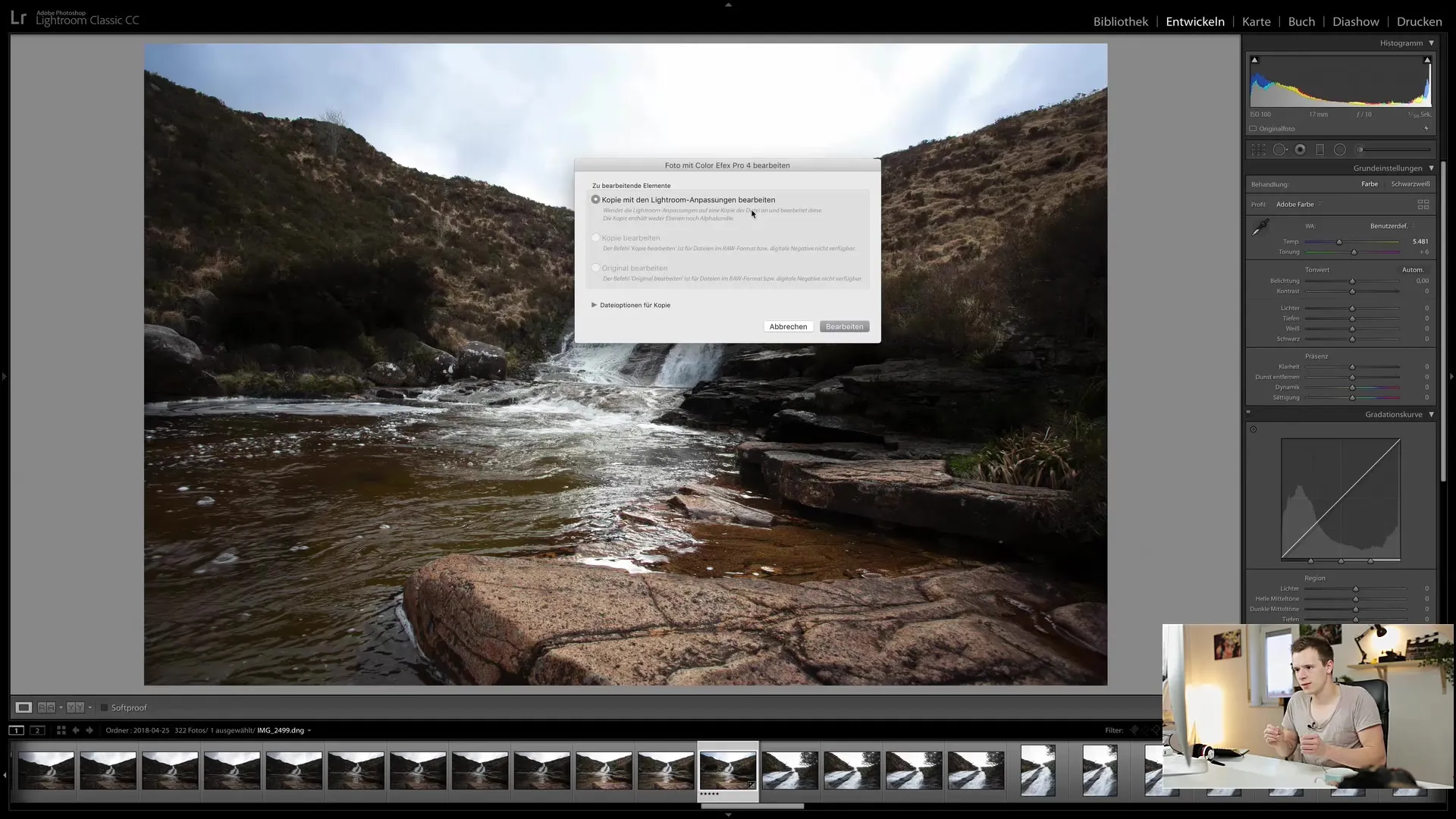
Keep in mind that this step is destructive - the original file remains unchanged, but you cannot undo the edits when transferring the image to the plugin. At this moment, you are in a "one-way process," indicating the irreversibility of the step.
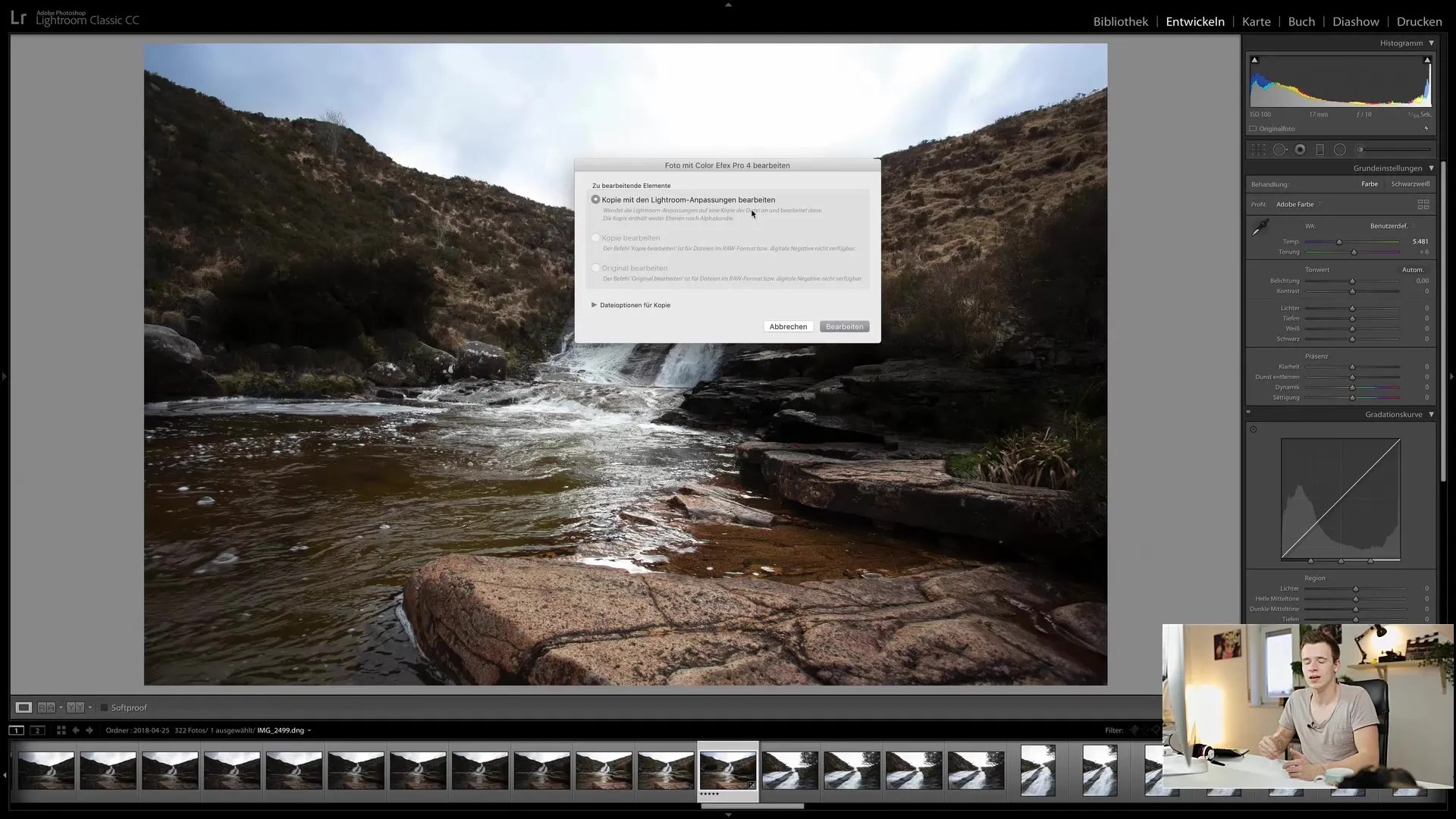
For Photoshop and other programs, there are options like "Edit Original" or "Edit Copy." Choosing the original will open the PSD file there, while the copy generates an entirely new file.
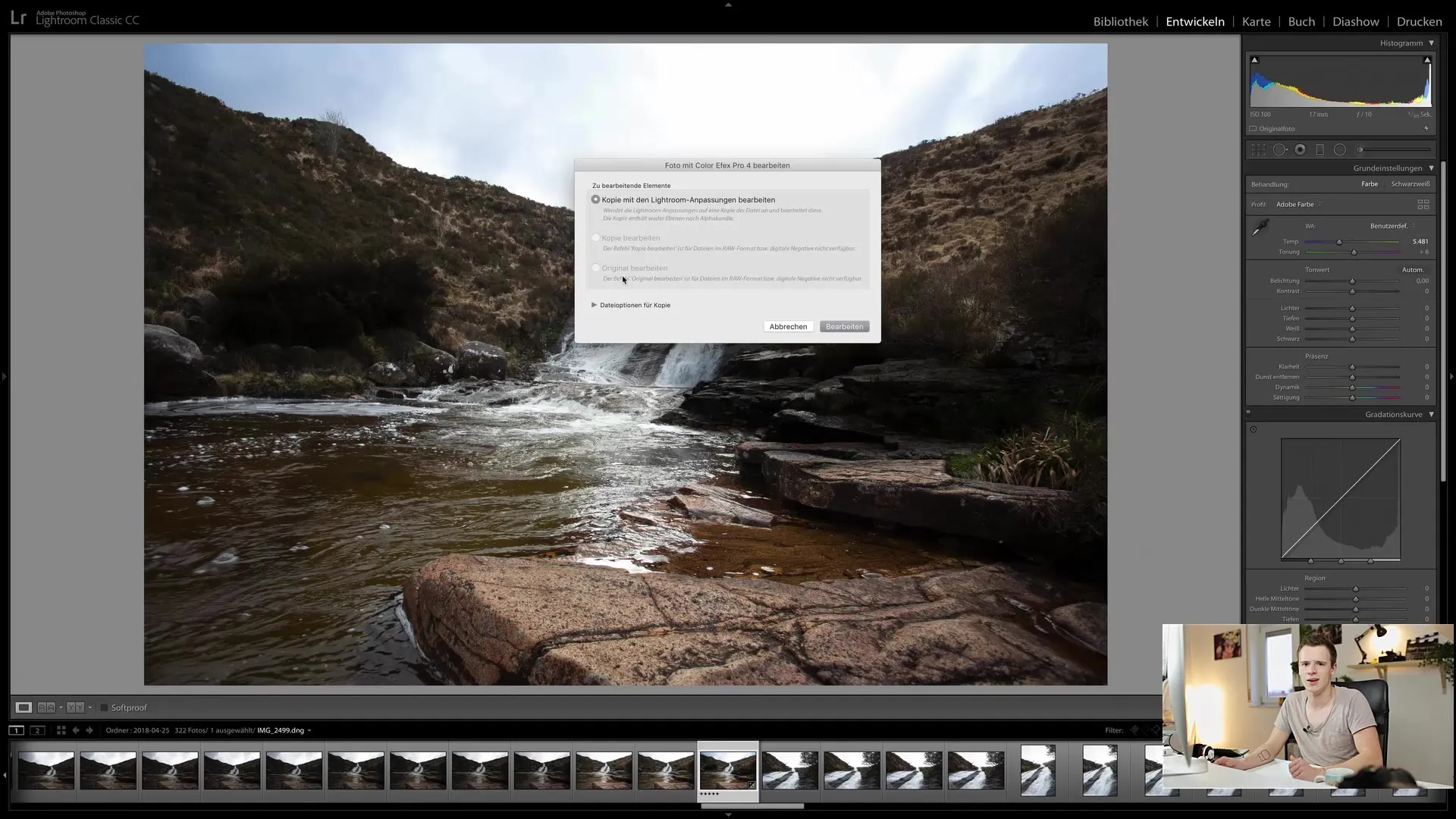
Save and return to Lightroom
After completing the editing in your external plugin, save the file. The image will now be re-imported into your Lightroom catalog. Make sure the new file is merged with the old stack so you can easily switch between the original and edited images.
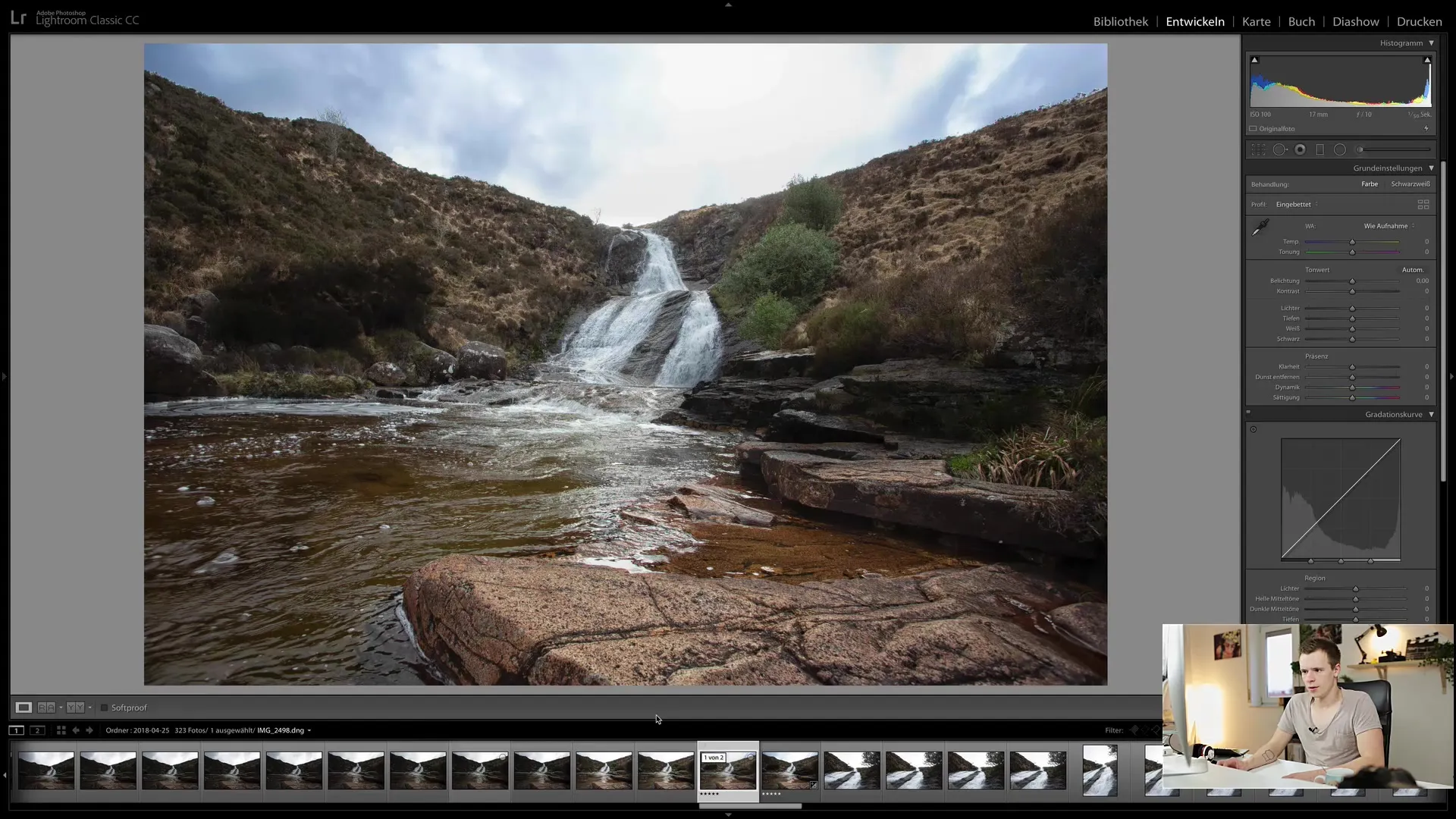
You can compare the two images to see the effects of your edits. Note that the filename of the edited file will appear in the format "Originalname - edited.tif." Metadata, such as star ratings, will also be transferred.
Synchronization of Metadata
If you notice that a file is missing or not displayed correctly, go to the library module and use the "Synchronize Folder" function. Lightroom will search for changes and add any new images or remove ones that are no longer available.
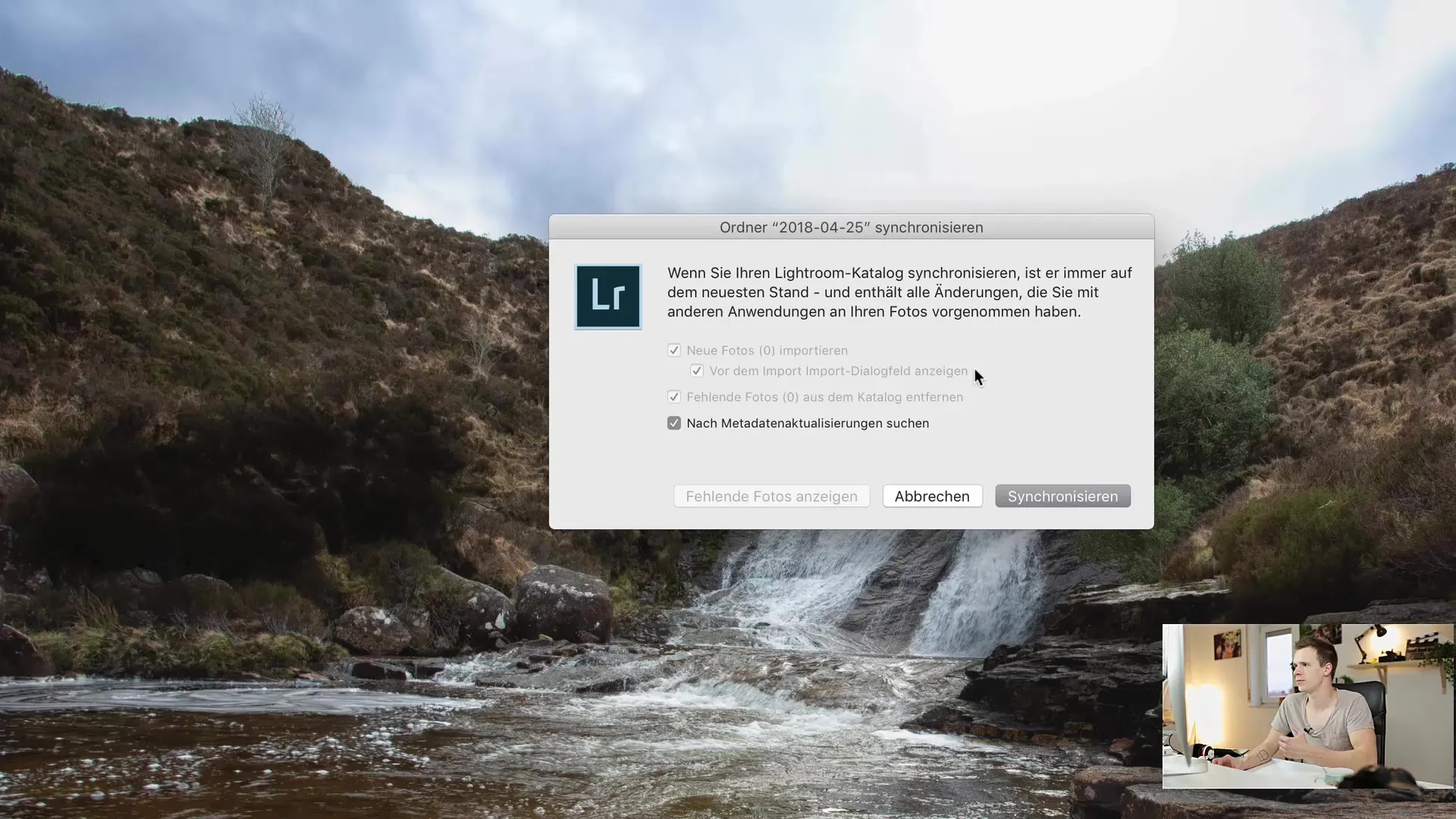
This step can be very helpful in ensuring that your media library is current and complete.
Summary
In this tutorial, you have learned how to integrate external editing tools into your Lightroom workflow. You now know how to customize presets and effectively pass your images to external plugins to optimize your edits.
Frequently Asked Questions
How do I select an external editing plugin?In the "Edit in" menu, choose the desired application installed on your computer.
Why TIFF instead of JPEG for external editing?TIFF saves more detail and is uncompressed, while JPEG is heavily compressed and loses information.
What are the benefits of creating a copy with Lightroom adjustments?This option creates a new file containing all Lightroom adjustments, while keeping the original unchanged.
Can I modify the settings in the plugin after export?No, the export is destructive and the settings cannot be changed afterwards.
How are metadata handled when editing in an external plugin?Metadata, such as star ratings, are also transferred to the edited file.


